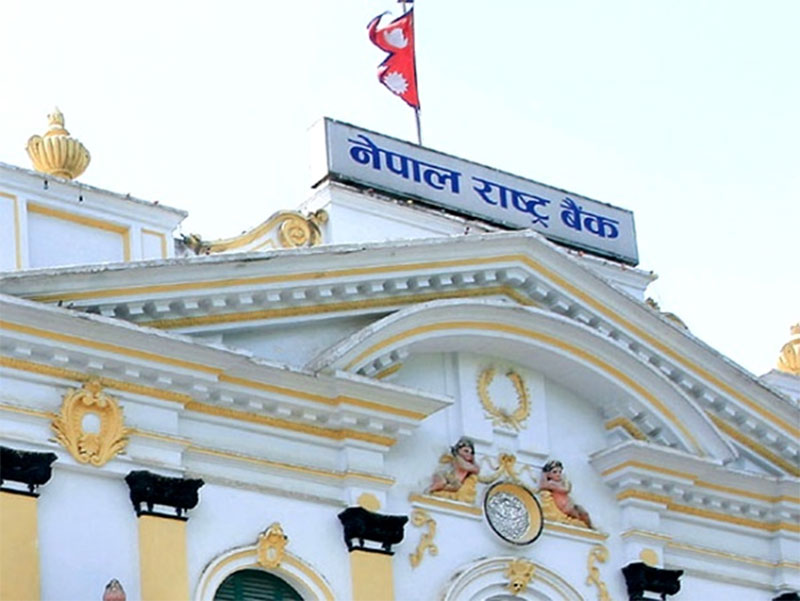
OR
NRB brings stricter formula to calculate interest rate spread
Published On: August 7, 2019 04:00 AM NPT By: Republica | @RepublicaNepal

Banks not allowed to count interest income from govt securities in new formula
KATHMANDU, Aug 7: Nepal Rastra Bank (NRB) has revised a formula to calculate spread that a bank must maintain between their deposits and lending rates.
In a new circular issued to the bank and financial institutions (BFIs) on Monday, the NRB rolled out the revised formula for calculation of interest rates spread in line with its announcement in the Monetary Policy for Fiscal Year 2019/20.Not only has the central bank lowered the cap on interest spread to 4.4 percent, it has also introduced a tighter approach on calculation of the spread formula. Banks have been provided a mid-July 2020 deadline to maintain interest rates spread of 4.4 percent. Any bank failing to maintain the spread rate will face action, warns the central bank.The modified formula will further reduce the real difference between deposit and lending rates of banks compared to the current method of calculating spread rate. Now onward, banks will not be allowed to include their interest-earning from their investments in government securities while calculating spread rate. Previously, they were allowed to include such interest earnings in spread calculation.This implies that the spread will now be the net difference between what banks earns in interest from loans and what they provide in deposits compared to the average difference between interest expenses in deposits and interest incomes from loans as well as other investments including in government securities.
As banks have to invest certain percent of their deposits in government securities, they will not be allowed to factor in the earnings from investment for spread calculation.
Though the NRB had introduced this formula earlier in 2014 when the incumbent Minister for Finance Yuba Raj Khatiwada was the governor, the central bank offered the relaxation on spread calculation by allowing BFIs to include interest earnings from their investment in government securities. The central bank embraced flexibility in spread calculation formula in line with the demand from the CEOs who were then against the spread cap of 5 percent.
The central bank has been gradually lowering the maximum spread rate in line with the Financial Sector Development Strategy (2015-2020) which envisages lowering the difference between deposit and lending rates to 4.4 percent by 2020.
REVISION WORRIES BANKERS
Bankers are worried with the modification of the interest rates spread formula, which, they say, was going to squeeze their profit by a huge margin.
“When we collect deposits, we have to pay interest. We cannot float all deposits as loans. Certain percent of the deposits must be invested in government securities. But, restricting that interest income in the calculation of the spread will reduce our margin,” a banker said, requesting anonymity. The banker said that the new formula will lower average spread to 3.4 percent in real.
Meanwhile, the Nepal Bankers Association (NBA) has called a meeting of its members on Wednesday morning to discuss the new spread formula along with other provisions laid out by the circular issued on Monday.
You May Like This

NRB's new rule requires banks to issue debentures worth Rs 62 billion
KATHMANDU, July 26: Commercial banks will have to float nearly Rs 62 billion worth of debentures in the current fiscal year... Read More...

PM Oli asks banks not to impose interest arbitrarily
KATHMANDU, Feb 16: Prime Minister KP Sharma Oli has urged the banks not to impose interest rate arbitrarily. PM Oli... Read More...





Just In
- CM Kandel requests Finance Minister Pun to put Karnali province in priority in upcoming budget
- Australia reduces TR visa age limit and duration as it implements stricter regulations for foreign students
- Govt aims to surpass Rs 10 trillion GDP mark in next five years
- Govt appoints 77 Liaison Officers for mountain climbing management for spring season
- EC decides to permit public vehicles to operate freely on day of by-election
- Fugitive arrested after 26 years
- Indian Potash Ltd secures contract to bring 30,000 tons of urea within 107 days
- CAN adds four players to squad for T20 series against West Indies 'A'













Leave A Comment